How to Print and Handle Large Format Prints
Large-format prints are a great way to showcase your artwork, photography, or design projects. They can create a stunning visual impact and attract attention from your audience. However, printing and handling large prints can also be challenging and require special considerations.
In this blog post, we will guide you through the steps involved in preparing your artwork for large printing, provide tips for printing large photo prints, and offer valuable insights on handling and caring for them.
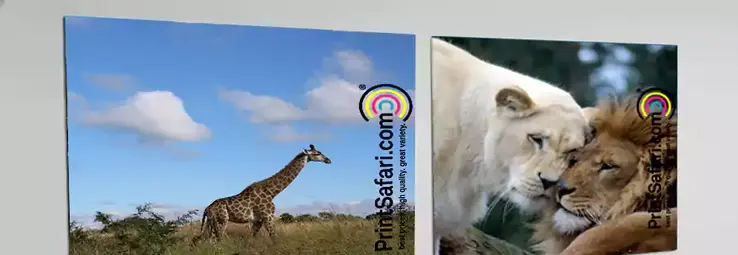
Preparing Your Artwork for Large Format Printing
Before you print your large photos, you must ensure your artwork is ready for the task. Here are some important steps to follow:
1. Choosing the Right File Format and Resolution
Your artwork’s file format and resolution will affect the quality and size of your prints. You should choose a file format that supports high resolution and preserves the details and colors of your artwork. TIFF, PDF, EPS, and PSD are the best file formats for printing large formats. Avoid file formats that compress or reduce the quality of your artwork, such as JPEG, GIF, or PNG.
The resolution of your artwork is measured in dots per inch (DPI) or pixels per inch (PPI). The higher the resolution, the sharper and clearer your prints will be. However, higher resolution also means larger file size and longer printing time. Aiming for a resolution suitable for your larger sizes and viewing distance would be best. A general rule of thumb is to have at least 150 DPI for large prints that will be viewed from a distance of 3 feet or more and at least 300 DPI for prints that will be viewed from a closer distance.
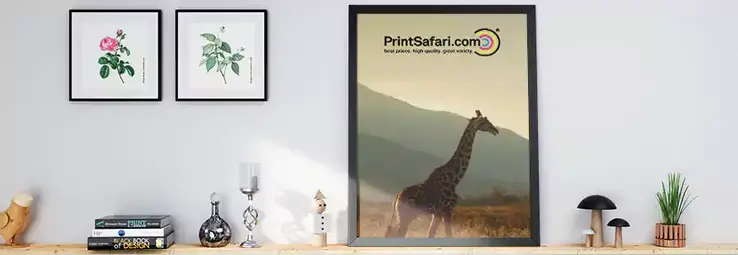
2. Color Management and Calibration
Color management and calibration are essential for ensuring that the colors of your artwork are accurately reproduced on your sizeable prints. Color management involves using a consistent color space throughout your workflow, from your monitor to your printer. A color space is a set of colors a device can display or print. The most common color spaces for large format printing are RGB (red, green, blue) and CMYK (cyan, magenta, yellow, black). RGB is used for digital devices such as monitors and cameras, while CMYK is used for printing devices such as wide-format printers and presses.
You should convert your artwork from RGB to CMYK before printing photos on a large format printer. This will ensure that the colors of your artwork are compatible with the printer’s color gamut (the range of colors it can produce). You can use software such as Adobe Photoshop or Illustrator to convert your artwork from RGB to CMYK.
Color calibration involves adjusting the settings of your monitor and printer to match the colors of your artwork. This will help you avoid color discrepancies or shifts between your screen and print output. You can use tools such as colorimeters or spectrophotometers to measure and adjust the colors of your monitor and printer. You can also use color profiles or ICC profiles to communicate the color characteristics of your devices to each other.
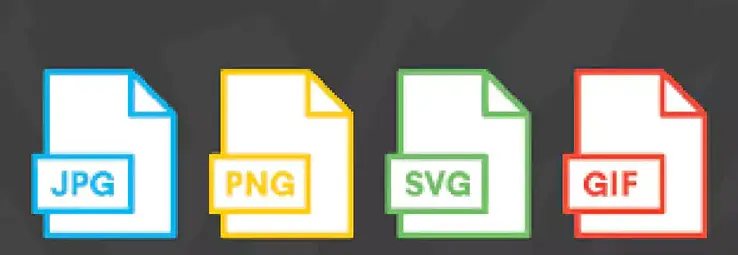
3. Design Considerations for Large Photo Prints
When designing your artwork for large photo printing, you should consider some factors that can affect the appearance and readability of your prints. Here are some tips to keep in mind:
- Use high-quality images that have enough resolution and detail for large photo printing. Avoid using low-quality images that are blurry, pixelated, or distorted.
- Choose fonts that are legible and suitable for large photo printing. Avoid using fonts that are too small, thin, or ornate.
- Use contrast and hierarchy to create visual interest and guide the viewer’s eye. Avoid using colors that are too similar or too bright.
- Use white space and margins to create balance and breathing room for your large photo printing. Avoid overcrowding or cluttering your design with too many elements.
- Use alignment and grids to create order and consistency for your large photo prints. Avoid using random or chaotic placement of elements.
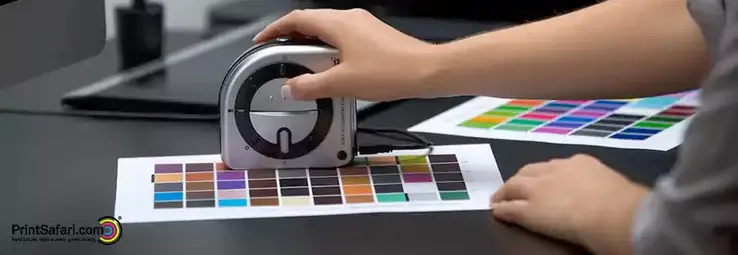
4. Tips for Effective Scaling and Image Optimization
Scaling and image optimization can help you adjust the size and quality of your artwork for large photo prints. Scaling involves enlarging or reducing the size of your artwork without changing its proportions or aspect ratio. Image optimization involves enhancing or modifying the quality of your artwork without affecting its size.
Here are some tips for effective scaling and image optimization:
- Use vector graphics whenever possible for scaling your artwork. Vector graphics are made of mathematical shapes and curves that can be scaled up or down without losing quality or resolution. Examples of vector graphics are logos, icons, illustrations, and text.
- Use raster graphics only when necessary for scaling your artwork. Raster graphics are made of pixels that have a fixed resolution and quality. Examples of raster graphics are photos, paintings, scans, and screenshots.
- Use interpolation methods to scale up raster graphics without losing too much quality. Interpolation methods are algorithms that add or remove pixels to change the size of raster graphics. Some of the common interpolation methods are nearest neighbor, bilinear, bicubic, and Lanczos.
- Use image editing software to optimize your raster graphics for large photo prints. Image editing software can help you adjust the brightness, contrast, saturation, sharpness, noise, and other aspects of your raster graphics. Some popular image editing softwares are Adobe Photoshop and GIMP.
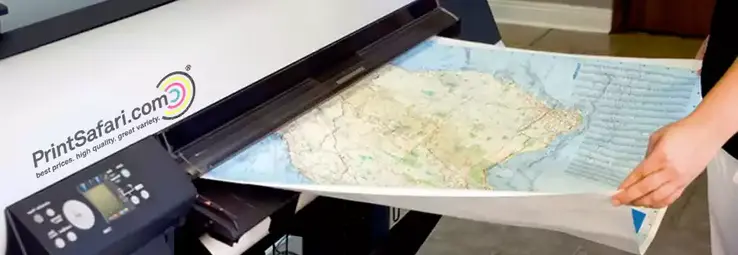
Printing Large Format Prints
Once you have prepared your artwork for large-format printing, you are ready to print your large-format prints. Here are some steps to follow:
Step 1: Choose the Right Printer and Paper
The printer and paper you choose will determine the quality and durability of your large-format prints. It would be best to choose a printer that can handle the print size and paper type you want, such as a wide format printer or a professional photo printer. You should also choose a paper that matches the style and purpose of your prints, such as fine art paper, canvas prints, metal prints, acrylic prints, or panoramic prints. You can check different printers and papers’ product details and specifications online or at a local store.

Step 2: Prepare the File and Print Preview
Before you print your large photo prints, you should prepare the file according to the printer and paper settings. You should ensure the file format, resolution, color profile, and print size are compatible with your selected printer and paper. You should also print a preview or a test print on a smaller paper to check the quality and accuracy of your prints. You can make any adjustments or corrections if needed.
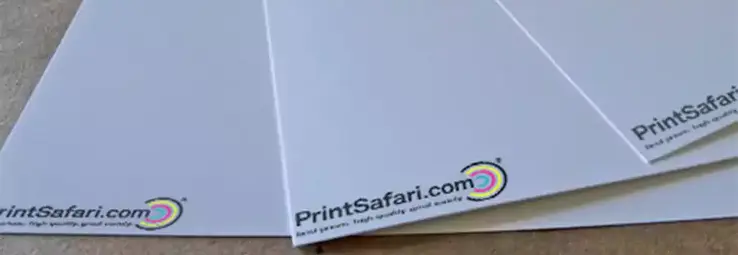
Step 3: Print and Inspect the Output
After you have prepared the file and printed the preview, you are ready to print your large-format photos. You should follow the instructions of your printer and paper manufacturer to load the paper correctly and start the printing process. You should also monitor the printing progress and inspect the output for errors or defects. If you notice any problems, you should stop the printing process and troubleshoot them.
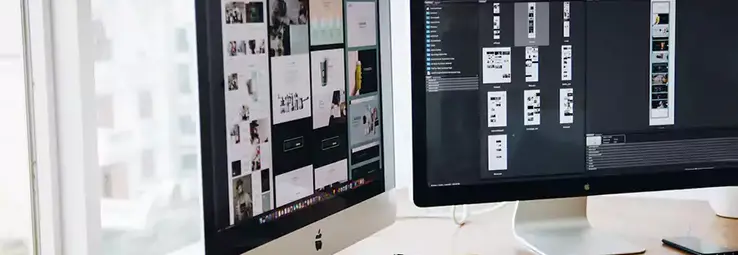
Step 4: Cut, Mount, and Store the Output
After you have printed your large photo prints, you need to cut, mount, and store them properly. You should use a sharp blade or scissors to cut off any excess paper or white border from your prints. You should also mount or frame your prints according to your preference and purpose. You can use different mounting and framing options, such as foam board, wood, metal, or glass. It would be best to store your prints in a cool, dry, dark place to prevent fading, warping, or damage.
Handling and Care Tips for Large Format Print
Large-format prints are delicate and sensitive products that require special handling and care. Here are some tips to follow:
1. Packaging and Transporting Your Large Prints Safely
When packaging and transporting your large or mini prints, you should protect them from physical or environmental damage. You should use sturdy and durable materials, such as cardboard tubes, bubble wrap, or plastic bags, to wrap and secure your prints. You should also label your packages clearly and handle them with care. You should avoid bending, folding, or dropping your prints.
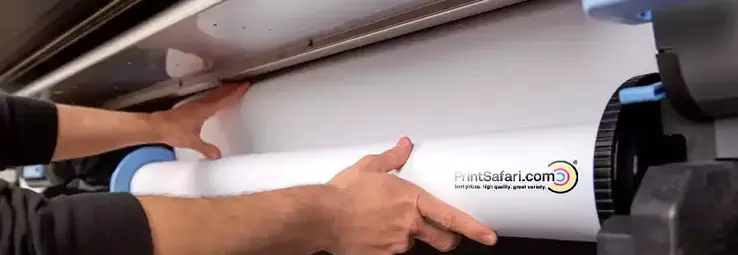
2. Unrolling and Flatting Techniques
It would be best to be gentle and patient when unrolling and flatting your large prints. Use a clean, flat surface to unroll your prints slowly and carefully. You should also use some weights or clips to hold down the edges of your prints and prevent them from curling or rolling back. You should avoid creasing, tearing, or scratching your prints.

3. Mounting and Framing Options
When mounting and framing your large prints, choose the option that suits your style and budget. You can use different mounting and framing options, such as canvas wraps, gallery frames, floating frames, or acrylic blocks. When choosing the option, it would be best to consider your prints’ size, weight, and thickness. You should follow the instructions of your mounting and framing provider to install your prints securely and safely.
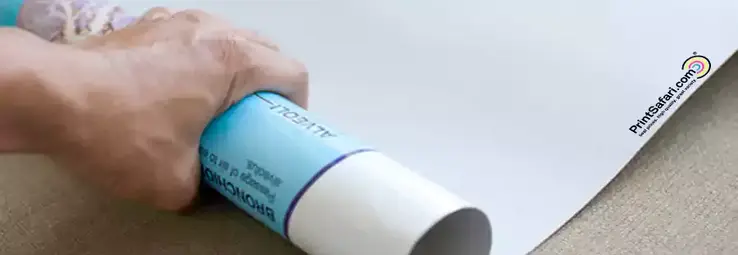
4. Display and Maintenance Recommendations
When displaying and maintaining your large prints, you should choose the location and condition to enhance their beauty and longevity. It would be best to display your prints in a well-lit and ventilated area away from direct sunlight, heat sources, or moisture. Regularly clean your prints with a soft cloth or feather duster to remove dust or dirt. You should avoid using any harsh chemicals or liquids to clean your prints.
Frequently Asked Questions
How do I ensure color accuracy in large-format prints?
Color management is crucial for large-format prints. Working with a professional printing service like PrintSafari that uses color calibration techniques, ensuring accurate color reproduction from your digital files to the final prints is important.
Can large photo prints be mounted or framed?
Large photo prints can be mounted or framed to enhance their appearance and durability. PrintSafari offers various mounting and framing options, allowing you to choose the best presentation method for your prints.
Can I print fine art prints in large format?
Absolutely! Fine arts can be printed in large formats to showcase artwork on a grand scale, allowing for a more immersive viewing experience and making a bold statement in galleries, museums, or personal spaces.
What printing technologies are used for large photo prints?
Large photo prints are produced using advanced printing technologies such as inkjet printing or digital printing. These technologies ensure high-quality results with sharp details, vibrant colors, and smooth gradients.
Can I print my artwork as a large format print?
Absolutely! If you have digital artwork or photographs, you can easily print them as large photo prints. Ensure your files meet the resolution and format requirements for optimal printing quality.






